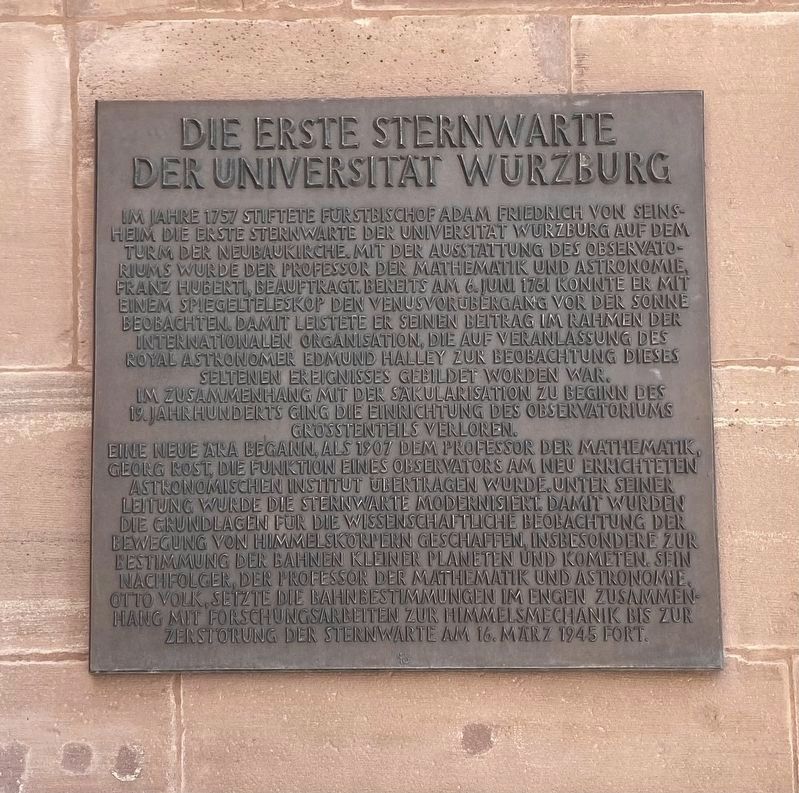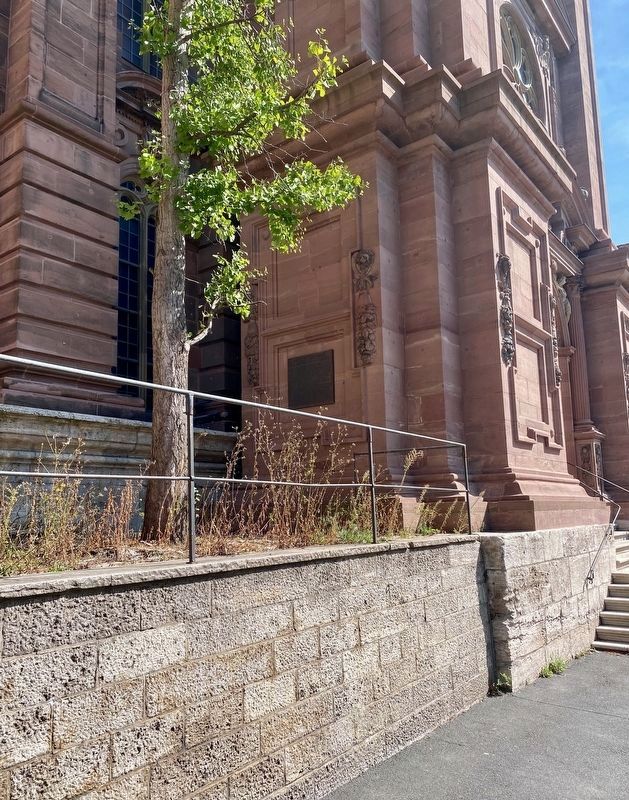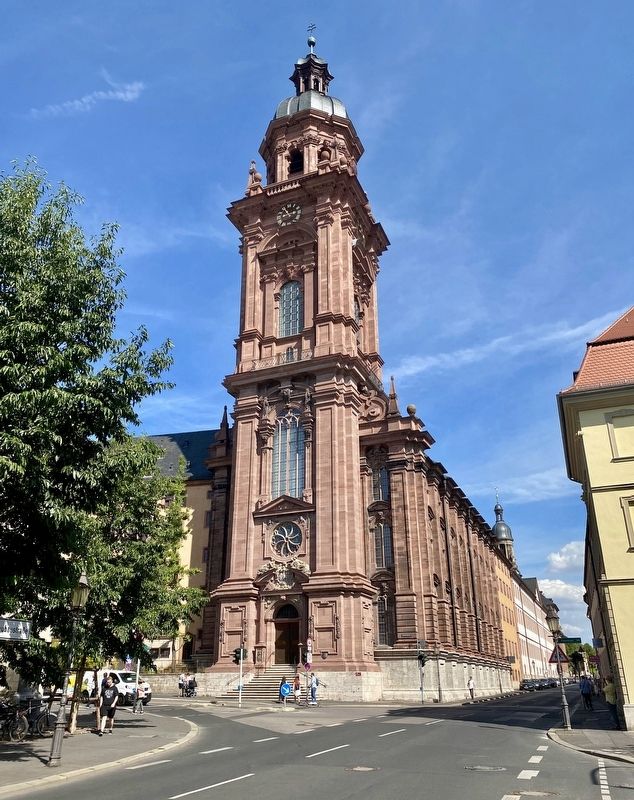Würzburg, Bavaria, Germany — Central Europe
Die Erste Sternwart der Universität Würzburg / The First Observatory of the University of Würzburg
Inscription.
Im jahre 1757 stiftete Furstbischof Adam Friedrich von Seinsheim die erste Sternwarte der Universität Würzburg auf dem Turm der Neubaukirche. Mit der Ausstattung des Observatoriums wurde der Professor der Mathematik und Astronomie, Franz Huberti, beauftragt. Bereits am 6. Juni 1761 konnte er mit einem Spiegelteleskop den Venusvorubergang vor der Sonne beobachten. Damit leistete er seinen Beitrag am Rahmen der Internationalen Organisation, die auf Veranlassung des Royal Astronomer Edmund Halley Zur Beobachtung dieses seltenen Ereignisses gebildet worden war.
Im Zusammenhang mit ser Sakularisation zu Beginn des 19. Jahrhunderts ging die Einrichtung des Observatoriums grosstenteils verloren.
Eine neue Ära Begann, als 1907 dem Professor der Mathematik, Georg Rost, die Funktion eines Observators am neu errichteten astronomischen Institut übertragen wurde. Unter seiner Leitung wurde die Sternwarte modernisiert. Damit wurden die Grundlagen für die Wissenschaftliche Beobachtung der Bewegung von Himmelskorpern geschaffen, insbesondere zur Bestimmung der Bahnen Kleiner Planeten und Kometen. Sein Nachfolger, der Professor der Mathematik und Astronomie, Otto Volk, setzte die Bahnbestimmungen im Engen zusammenhang mit Forschungsarbeiten zur Himmelsmechanik bis zur Zerstörung der Sternwarte am 16. märz 1945 fort.
In 1757 Prince Bishop Adam Friedrich von Seinsheim sponsored the first observatory of the University of Würzburg, placed upon the tower of the Neubau Church. The Professor of Mathematics and Astronomy, Franz Huberti, was commissioned to furnish the observatory. As early as June 6, 1761, he was able to observe the passage of Venus in front of the sun with a reflecting telescope. In doing so, he made his contribution to the framework of the International Organization set up at the instigation of Royal Astronomer Edmund Halley to observe this rare event.
In connection with the secularization at the beginning of the 19th century, the observatory set up was mostly lost.
A new era began in 1907, when the Professor of Mathematics, Georg Rost, installed an observatory in the newly built astronomical institute, and under his management the observatory was modernized. With that the bases was created for the scientific observation of the movement by celestial bodies, especially for the determination of the orbits of small planets and comets. His successor, the Professor of Mathematics and Astronomy, Otto
Volk, connected the determination of orbital paths with the research work on celestial mechanics, up until the destruction of the observatory on March 16, 1945.
Topics. This historical marker is listed in this topic list: Science & Medicine. A significant historical date for this entry is June 6, 1761.
Location. 49° 47.432′ N, 9° 55.93′ E. Marker is in Würzburg, Bayern (Bavaria). Marker is at the intersection of Domerschulstraße and Neubaustrasse, on the right when traveling north on Domerschulstraße. Touch for map. Marker is in this post office area: Würzburg BY 97070, Germany. Touch for directions.
Other nearby markers. At least 8 other markers are within walking distance of this marker. Neubaukirche / The Neubau Church (here, next to this marker); Antonius Neidhardt Graf von Gneisenau / Field Marshal Antonius Neidhardt, Count of Gneisenau (about 90 meters away, measured in a direct line); Johann Lukas Schönlein (about 90 meters away); Priesterseminar / Seminary (about 120 meters away); Hof Groß von Trockau / Gross von Trockau Manor (about 120 meters away); Former Synagogue (about 150 meters away); Die Erste Pizzeria in Deutschland / The First Pizzeria in Germany (about 180 meters away); Johann Peter Alexander Wagner (about 210 meters away). Touch for a list and map of all markers in Würzburg.
Credits. This page was last revised on October 6, 2022. It was originally submitted on October 6, 2022, by Andrew Ruppenstein of Lamorinda, California. This page has been viewed 58 times since then and 13 times this year. Photos: 1, 2, 3. submitted on October 6, 2022, by Andrew Ruppenstein of Lamorinda, California.


